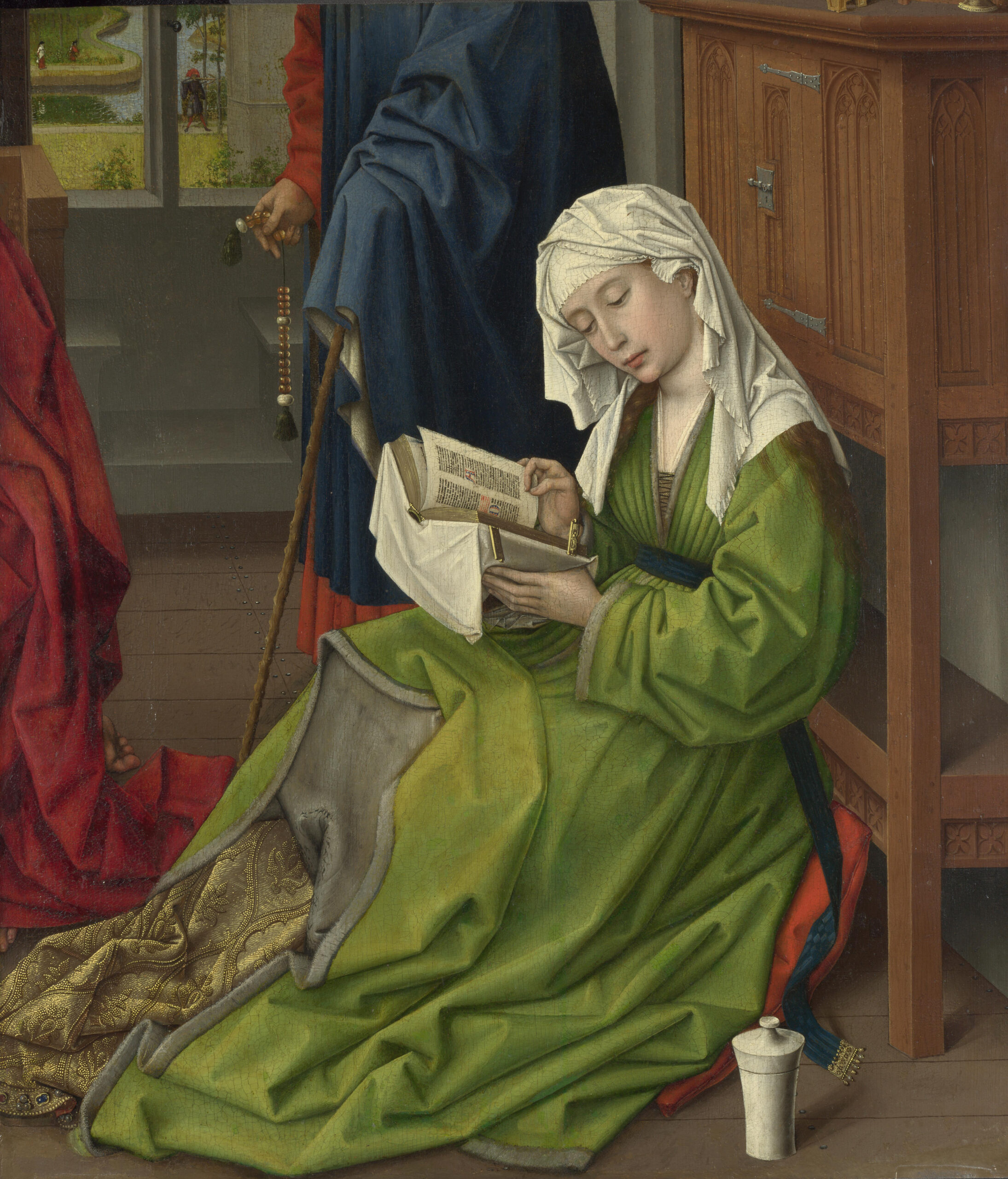This is a painting from Maria Magdalen painted by Rogier van der Weijden. I used it during one of our Online Retreats.
What do we see?
We see a woman, Mary from Magdala. She is reading and absorbed in what she is reading. Thinking and embracing what she is reading. We got inspired by her contemplative reading. She is well dressed, white, and seemingly rich.
Do we not all make our own images of how we see the world and the people in it?
This Mary is white, painted by a Dutchman somewhere between 1435 and 1438. Next to her, we see a tiny bottle, a small heirloom of her past. She is deeply silent and reading.
“Are there no layers in silence?
There are layers of silence. Van der Weyden’s Magdalen is deeply silent, but she is reading. Her mind is active and willed into activity. This, then is a mitigated silence, since we are only receptive to the thoughts of what we are reading. Maria Magdalen is obviously reading the scriptures, and meditating on what she reads, but her silence can only be between passages of the reading and will be concerned with those passages. If we do not read with intervals of silent reflection, we will understand only in part what we read. This is a fractured silence, good but imperfect. We all need to read, to keep our spirit alert, to have an inner texture, is it there, that we can respond to the absolutes of pure soundlessness, but this chosen, meditative layer is the least significant.”
(from: The Art of Lent by Sister Wendy Beckett)
The Magdalen Reading is one of three surviving fragments of a large mid-15th-century oil-on-panel altarpiece by the Early Netherlandish painter Rogier van der Weyden. The panel, originally oak, was completed some time between 1435 and 1438 and has been in the National Gallery, London since 1860. It shows a woman with the pale skin, high cheek bones and oval eyelids typical of the idealised portraits of noble women of the period. She is identifiable as the Magdalen from the jar of ointment placed in the foreground, which is her traditional attribute in Christian art. She is presented as completely absorbed in her reading, a model of the contemplative life, repentant and absolved of past sins. In Catholic tradition the Magdalen was conflated with both Mary of Bethany who anointed the feet of Jesus with oil and the unnamed “sinner” of Luke 7:36–50. Iconography of the Magdalen commonly shows her with a book, in a moment of reflection, in tears, or with eyes averted. (from Wikipedia.org)
If you like this, please, do feel welcome to join us at a monthly Online Retreat and check here for the next one: https://theworldaroundmytable.com/agenda/
A few faithful ones come each time and again, and a few come when it is possible and a few, well that is the surprising part… Who is joining and from which country? That is the precious part of The World Around My Table.
Welcome.
Warm greetings, Janneke
